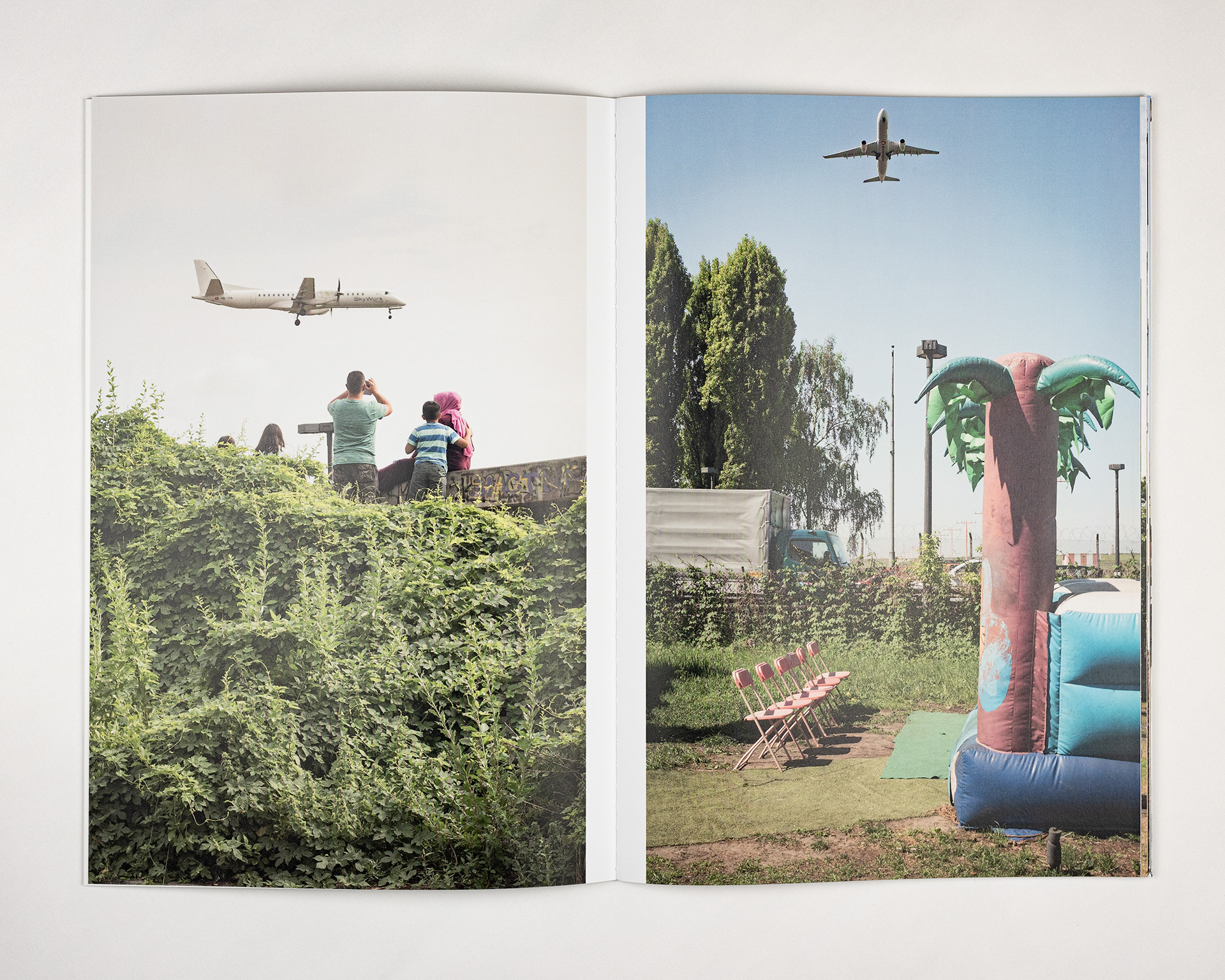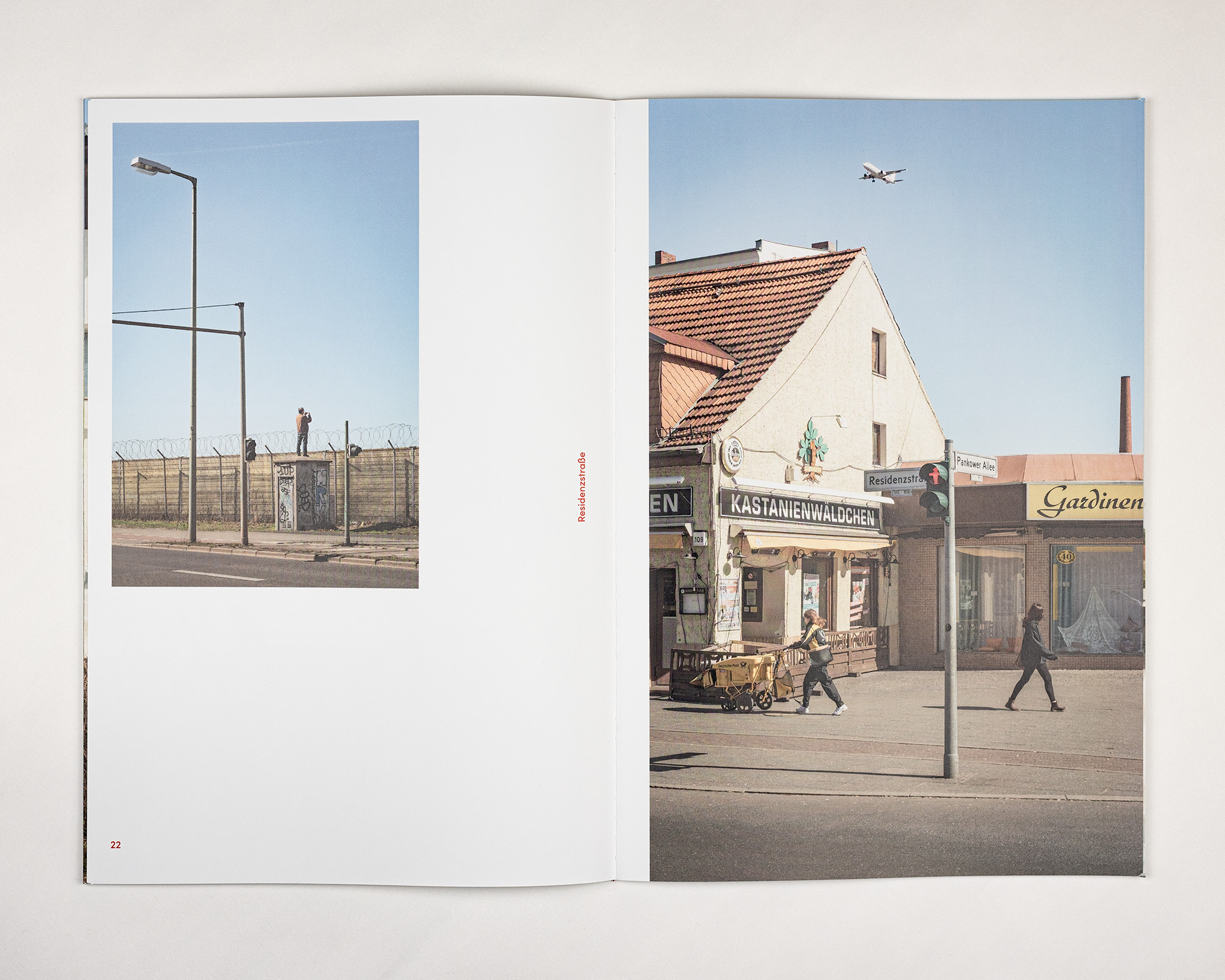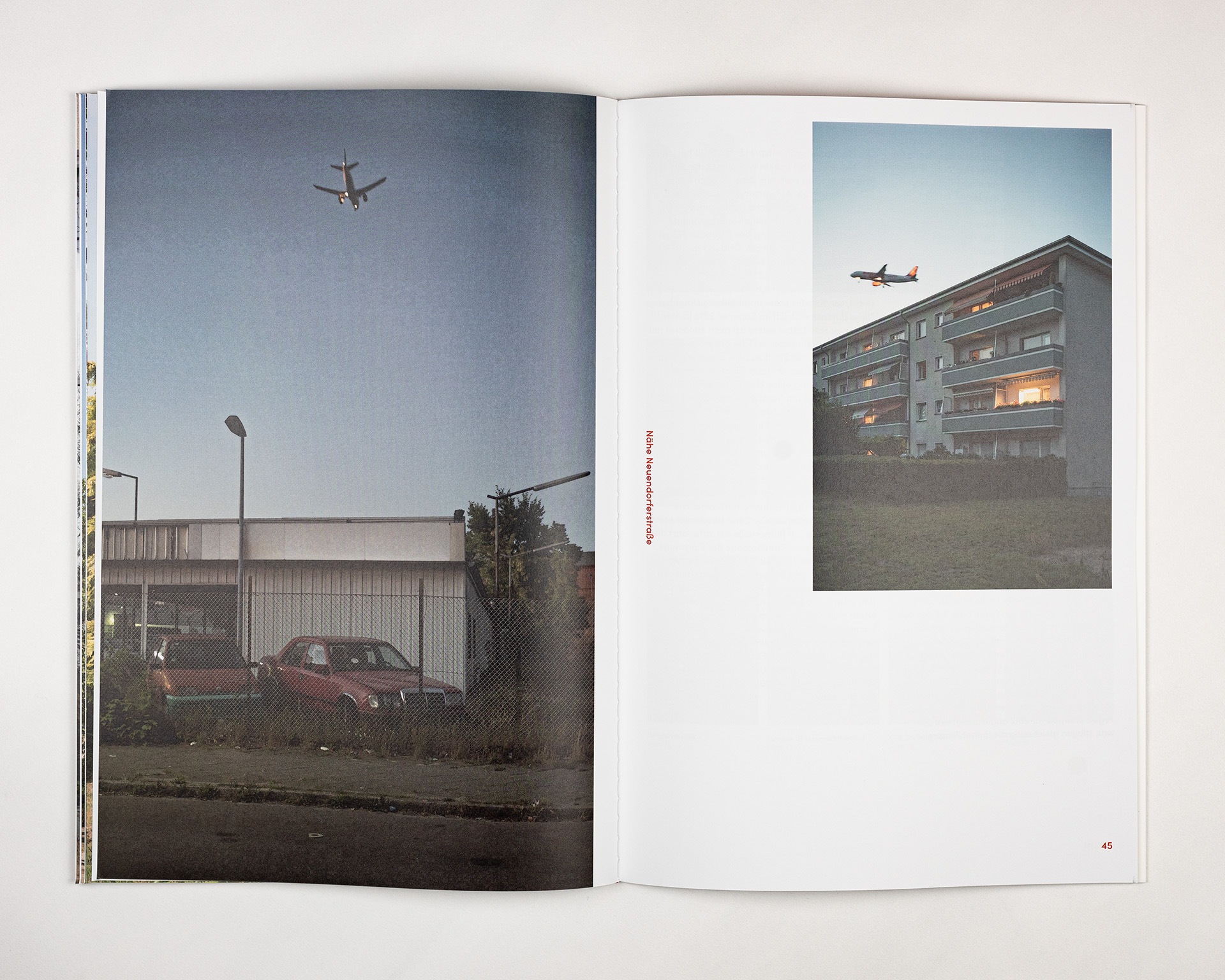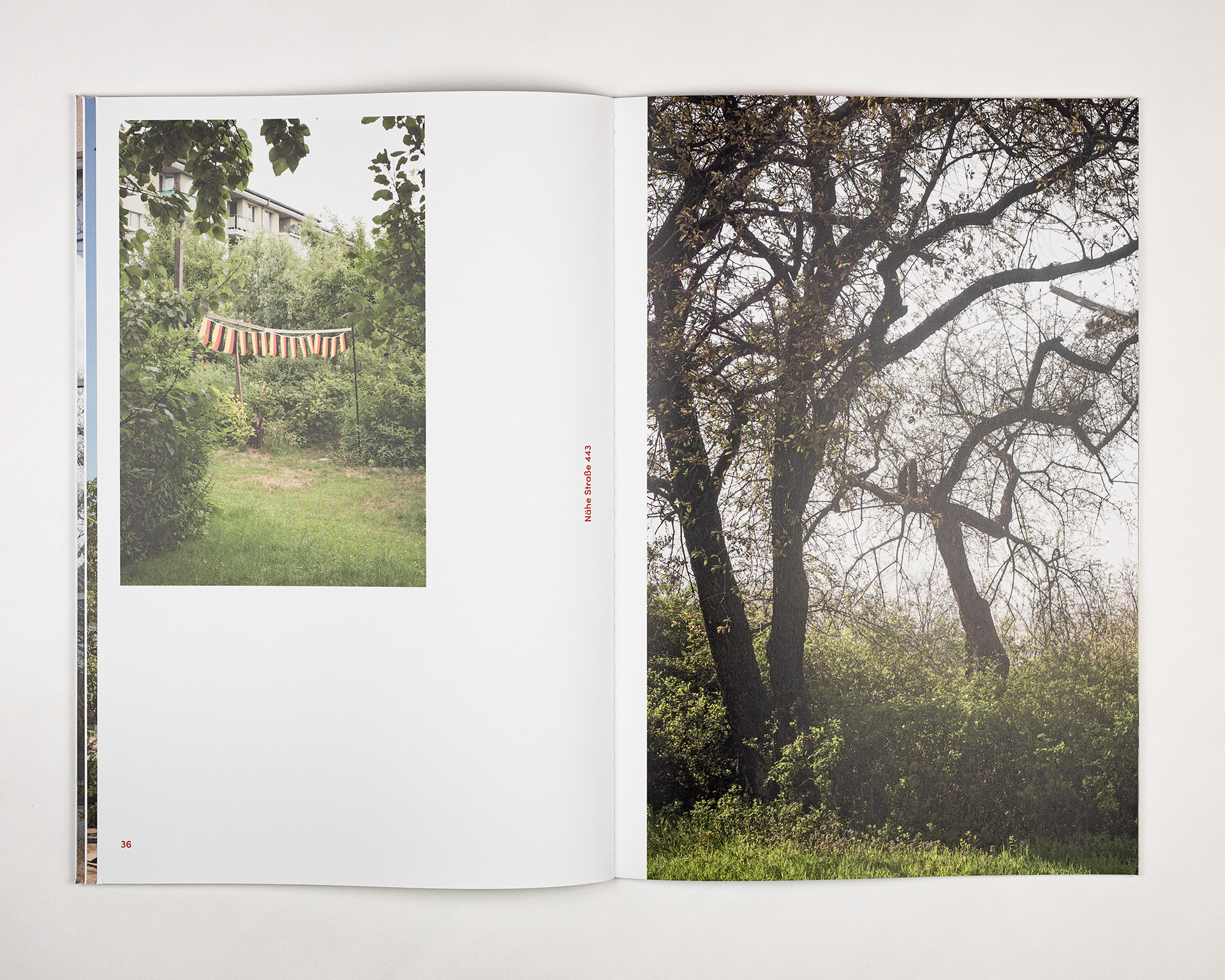



























TXL
Last
Call
Berlin
2021
self published photobook 1st edition of 100 copies 225x330 cm
To check out the
TXL, Last Call Berlin
photo series
click here
Last
Call
Berlin
2021
self published photobook 1st edition of 100 copies 225x330 cm
To check out the
TXL, Last Call Berlin
photo series
click here
Summer 2018 in the flight entry lane of Tegel Airport. Children play on a bouncy castle, elderly ladies sit chatting outside a café, an angler sits quietly on the banks of the Havel River. At five-minute intervals, airplanes roar close over the idle hustle and bustle on the ground. Two years later, the sky is empty. Tegel Airport has closed its tarmac for good, and some Berliners are already thinking nostalgically back to their many holiday trips that started here. So close. So easy. For residents, on the other hand, peace is finally returning to their neighborhoods after many years of constant noise pollution. On November 8, 2020, the last plane took off from TXL, in the first year of the Corona pandemic which had already brought air traffic to a temporary standstill before the airports closure. So the final months of Tegel Airport turned into a bumpy landing after unprecedented years of mishaps and delays during the construction of BER airport which now replaces TXL. It took 14 years to complete BER, which was supposed to replace TXL as the capital's airport much earlier. By contrast, Tegel, then a military airport, had been built in just 90 days. Originally built for 2.5 million passengers per year, TXL most recently carried up to 20 million passengers. When I started working on this series in 2018, planes were still flying through the flight entry lane in Berlin's north from early morning until late at night. Coming from the east or west, depending on the wind. Without pause, they roared over Kurt-Schumacher-Platz, over small gardens, residential areas and shopping streets. Over the years, there have been repeated reports of residents moving away from the affected neighborhoods because of the enormous noise pollution. Since Tegel's closure was first announced in 2012, real estate prices have risen significantly. The frustration was then correspondingly great among those who subsequently invested in an apartment or house here when they realized that they would have to wait a long time for the expected rise in value of their properties. Numerous petitions were submitted and citizens' initiatives were founded to campaign for the closure of Tegel Airport, but it was only with the opening of BER in 2020 that the noise stopped. While working on the photo series TXL, Last Call Berlin, I was not interested in the airport itself, but in its immediate surroundings. I repeatedly roamed through it on foot in the summer of 2018. In the process, I first focussed on the question of what relationship people and the city have to the omnipresent air traffic. Thus, I once found myself in the performance of a small family circus that had pitched its tent close to the edge of the runway. During the show, the turbines of the airplanes even drowned out the music in the ring. Not far from the circus, I regularly found groups of people sitting on a wall watching the approaching planes as they landed. The different opinions of Berliners on the closure of Tegel Airport could not have been more diverse. The series describes the situation in a humorous way, revealing the absurd proximity and omnipresence of the planes without judging. The photographs show seemingly fleeting encounters between the people in the urban spaces on the ground and the machines hanging heavy in the sky.


























